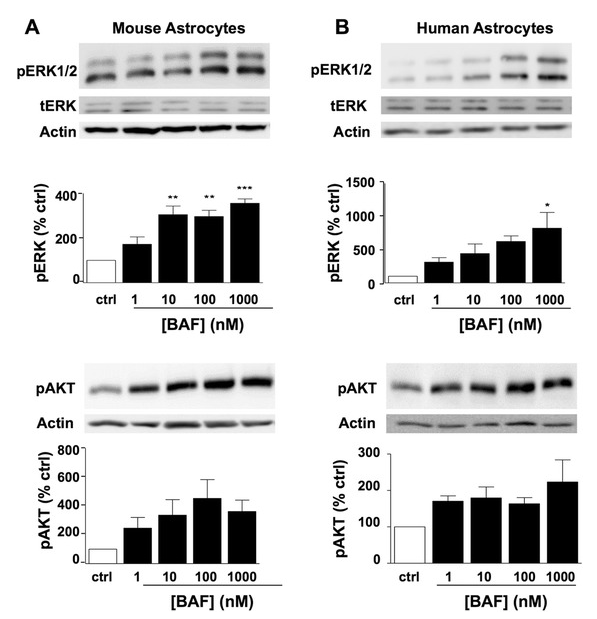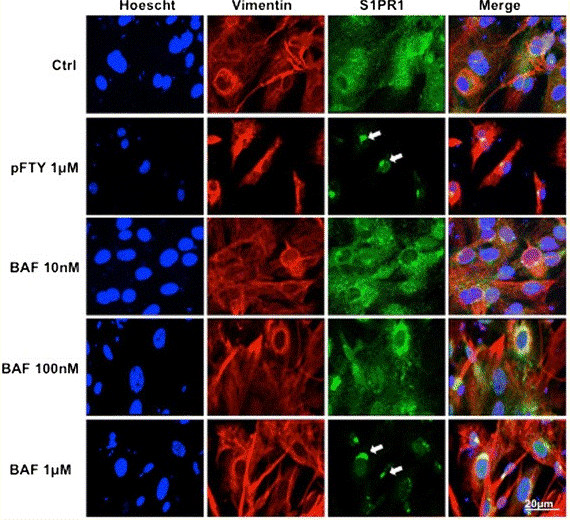
- Bioactive Compounds
- By Signaling Pathways
- PI3K/Akt/mTOR
- Epigenetics
- Methylation
- Immunology & Inflammation
- Protein Tyrosine Kinase
- Angiogenesis
- Apoptosis
- Autophagy
- ER stress & UPR
- JAK/STAT
- MAPK
- Cytoskeletal Signaling
- Cell Cycle
- TGF-beta/Smad
- Compound Libraries
- Popular Compound Libraries
- Customize Library
- Clinical and FDA-approved Related
- Bioactive Compound Libraries
- Inhibitor Related
- Natural Product Related
- Metabolism Related
- Cell Death Related
- By Signaling Pathway
- By Disease
- Anti-infection and Antiviral Related
- Neuronal and Immunology Related
- Fragment and Covalent Related
- FDA-approved Drug Library
- FDA-approved & Passed Phase I Drug Library
- Preclinical/Clinical Compound Library
- Bioactive Compound Library-I
- Bioactive Compound Library-Ⅱ
- Kinase Inhibitor Library
- Express-Pick Library
- Natural Product Library
- Human Endogenous Metabolite Compound Library
- Alkaloid Compound LibraryNew
- Angiogenesis Related compound Library
- Anti-Aging Compound Library
- Anti-alzheimer Disease Compound Library
- Antibiotics compound Library
- Anti-cancer Compound Library
- Anti-cancer Compound Library-Ⅱ
- Anti-cancer Metabolism Compound Library
- Anti-Cardiovascular Disease Compound Library
- Anti-diabetic Compound Library
- Anti-infection Compound Library
- Antioxidant Compound Library
- Anti-parasitic Compound Library
- Antiviral Compound Library
- Apoptosis Compound Library
- Autophagy Compound Library
- Calcium Channel Blocker LibraryNew
- Cambridge Cancer Compound Library
- Carbohydrate Metabolism Compound LibraryNew
- Cell Cycle compound library
- CNS-Penetrant Compound Library
- Covalent Inhibitor Library
- Cytokine Inhibitor LibraryNew
- Cytoskeletal Signaling Pathway Compound Library
- DNA Damage/DNA Repair compound Library
- Drug-like Compound Library
- Endoplasmic Reticulum Stress Compound Library
- Epigenetics Compound Library
- Exosome Secretion Related Compound LibraryNew
- FDA-approved Anticancer Drug LibraryNew
- Ferroptosis Compound Library
- Flavonoid Compound Library
- Fragment Library
- Glutamine Metabolism Compound Library
- Glycolysis Compound Library
- GPCR Compound Library
- Gut Microbial Metabolite Library
- HIF-1 Signaling Pathway Compound Library
- Highly Selective Inhibitor Library
- Histone modification compound library
- HTS Library for Drug Discovery
- Human Hormone Related Compound LibraryNew
- Human Transcription Factor Compound LibraryNew
- Immunology/Inflammation Compound Library
- Inhibitor Library
- Ion Channel Ligand Library
- JAK/STAT compound library
- Lipid Metabolism Compound LibraryNew
- Macrocyclic Compound Library
- MAPK Inhibitor Library
- Medicine Food Homology Compound Library
- Metabolism Compound Library
- Methylation Compound Library
- Mouse Metabolite Compound LibraryNew
- Natural Organic Compound Library
- Neuronal Signaling Compound Library
- NF-κB Signaling Compound Library
- Nucleoside Analogue Library
- Obesity Compound Library
- Oxidative Stress Compound LibraryNew
- Plant Extract Library
- Phenotypic Screening Library
- PI3K/Akt Inhibitor Library
- Protease Inhibitor Library
- Protein-protein Interaction Inhibitor Library
- Pyroptosis Compound Library
- Small Molecule Immuno-Oncology Compound Library
- Mitochondria-Targeted Compound LibraryNew
- Stem Cell Differentiation Compound LibraryNew
- Stem Cell Signaling Compound Library
- Natural Phenol Compound LibraryNew
- Natural Terpenoid Compound LibraryNew
- TGF-beta/Smad compound library
- Traditional Chinese Medicine Library
- Tyrosine Kinase Inhibitor Library
- Ubiquitination Compound Library
-
Cherry Picking
You can personalize your library with chemicals from within Selleck's inventory. Build the right library for your research endeavors by choosing from compounds in all of our available libraries.
Please contact us at [email protected] to customize your library.
You could select:
- Antibodies
- Bioreagents
- qPCR
- 2x SYBR Green qPCR Master Mix
- 2x SYBR Green qPCR Master Mix(Low ROX)
- 2x SYBR Green qPCR Master Mix(High ROX)
- Protein Assay
- Protein A/G Magnetic Beads for IP
- Anti-DYKDDDDK Tag magnetic beads
- Anti-DYKDDDDK Tag Affinity Gel
- Anti-Myc magnetic beads
- Anti-HA magnetic beads
- Poly DYKDDDDK Tag Peptide lyophilized powder
- Protease Inhibitor Cocktail
- Protease Inhibitor Cocktail (EDTA-Free, 100X in DMSO)
- Phosphatase Inhibitor Cocktail (2 Tubes, 100X)
- Cell Biology
- Cell Counting Kit-8 (CCK-8)
- Animal Experiment
- Mouse Direct PCR Kit (For Genotyping)
- New Products
- Contact Us
Siponimod (BAF312)
BAF312 (Siponimod) is a next-generation S1P receptor agonist, selective for S1P1 and S1P5 receptors with EC50 of 0.39 nM and 0.98 nM, exhibits >1000-fold selectivity over S1P2, S1P3 and S1P4 receptors. Phase 3.

Siponimod (BAF312) Chemical Structure
CAS: 1230487-00-9
Selleck's Siponimod (BAF312) has been cited by 12 Publications
1 Customer Review
Purity & Quality Control
Batch:
Purity:
99.96%
99.96
Other S1P Receptor Products
Related compound libraries
Choose Selective S1P Receptor Inhibitors
Cell Data
| Cell Lines | Assay Type | Concentration | Incubation Time | Formulation | Activity Description | PMID |
|---|---|---|---|---|---|---|
| CHO | Function assay | 120 mins | Agonist activity at human S1P1 receptor transfected in CHO cells incubated for 10 to 15 mins prior to GTPgamma35S addition measured after 120 mins by GTPgamma35S binding assay, EC50=0.0004μM | 24900670 | ||
| CHO | Function assay | Agonist activity at human S1P5 receptor expressed in CHO cells by [35S]GTPgammaS binding assay, EC50=0.00098μM | 24125884 | |||
| CHO | Function assay | Agonist activity at human S1P4 receptor expressed in CHO cells by [35S]GTPgammaS binding assay, EC50=0.75μM | 24125884 | |||
| CHO | Function assay | 120 mins | Agonist activity at human S1P3 receptor transfected in CHO cells incubated for 10 to 15 mins prior to GTPgamma35S addition measured after 120 mins by GTPgamma35S binding assay, EC50=5μM | 24900670 | ||
| Click to View More Cell Line Experimental Data | ||||||
Biological Activity
| Description | BAF312 (Siponimod) is a next-generation S1P receptor agonist, selective for S1P1 and S1P5 receptors with EC50 of 0.39 nM and 0.98 nM, exhibits >1000-fold selectivity over S1P2, S1P3 and S1P4 receptors. Phase 3. | ||||
|---|---|---|---|---|---|
| Targets |
|
| In vitro | ||||
| In vitro | BAF312 (Siponimod) is a potent and selective S1P receptor agonist, with EC50 of 0.39 nM and 0.98 nM for S1P1 and S1P5receptors, exhibits >1000-fold selectivity over S1P2, S1P3 and S1P4 receptors. [1]BAF312 (1 h at 1 μM) promotes prominent internalization of S1P1 receptors by 91%.[2] | |||
|---|---|---|---|---|
| Kinase Assay | GTPγ[35S] binding assay | |||
| The cells are homogenized and centrifuged at 26900 × g for 30 min at 4°C. Membranes are re-suspended in 20 mM HEPES (pH 7.4), 100 mM NaCl, 10 mM MgCl2, 1 mM EDTA and 0.1% fat-free BSA at 2–3 mg protein/mL. GTPγ[35S] binding assay is performed with the membranes (75 mg protein /mL in 50 mM HEPES, 100 mM NaCl, 10 mM MgCl2, 20 μg/mL saponin and 0.1% fat-free BSA (pH 7.4), 5 mg/mL with wheat-germ agglutinin-coated scintillation proximity assay-bead, and 10 μM GDP for 10–15 min. The GTPγ[35S]-binding reaction is started by the addition of 200 pM GTPγ[35S]. After 120 min at room temperature, the plates are centrifuged for 10 min at 300 × g and counted. | ||||
| Cell Research | Cell lines | CHO | ||
| Concentrations | ~1 μM | |||
| Incubation Time | 1 h | |||
| Method | Agonist-mediated internalization of S1P1 receptors in CHO cells analysed by flow cytometry Myc-tag hS1P1 cells are incubated for 1 h with agonist at 37°C in standard culture medium followed by a PBS wash. An aliquot is kept on ice for 3 h, while another aliquot is left for 3 (or 12) h in culture medium (no agonist) at 37°C. The cells are then incubated either with 4 μg/mL monoclonal mouse anti C-myc IgG1 antibody or with isotype control mouse IgG1 for 60 min at 4°C, followed by an incubation with 1 μg/mL of Alexa488-labelled goat anti-mouse secondary conjugates. The cells are subjected to flow cytometry measurements using 10000 viable cells per sample. | |||
| Experimental Result Images | Methods | Biomarkers | Images | PMID |
| Western blot | p-ERK / ERK / p-AKT / AKT |

|
26856814 | |
| Immunofluorescence | Vimentin / S1PR1 |

|
26856814 | |
| In Vivo | ||
| In vivo | BAF312 effectively suppresses encephalomyelitis (EAE) in rats by internalizing S1P1 receptors, rendering them insensitive to the egress signal from lymph nodes. [1] BAF312 significantly reduces clinical scores when dosed prophylactically or therapeutically in mice at 0.3 mg/kg. [3] | |
|---|---|---|
| Animal Research | Animal Models | encephalomyelitis (EAE) model rat |
| Dosages | 0.03, 0.3 and 3 mg/kg | |
| Administration | oral gavage | |
| NCT Number | Recruitment | Conditions | Sponsor/Collaborators | Start Date | Phases |
|---|---|---|---|---|---|
| NCT05376579 | Active not recruiting | Active Secondary Progressive Multiple Sclerosis | Novartis Pharmaceuticals|Novartis | June 17 2022 | -- |
| NCT04895202 | Terminated | Secondary Progressive Multiple Sclerosis With Inflammatory Disease Activity | Novartis Pharmaceuticals|Novartis | November 19 2021 | -- |
| NCT05826028 | Completed | Secondary Progressive Multiple Sclerosis | Novartis Pharmaceuticals|Novartis | July 9 2020 | -- |
| NCT02029274 | Terminated | Active Dermatomyositis | Novartis Pharmaceuticals|Novartis | August 25 2013 | Phase 2 |
Chemical lnformation & Solubility
| Molecular Weight | 516.6 | Formula | C29H35F3N2O3 |
| CAS No. | 1230487-00-9 | SDF | Download Siponimod (BAF312) SDF |
| Smiles | CCC1=C(C=CC(=C1)C(=NOCC2=CC(=C(C=C2)C3CCCCC3)C(F)(F)F)C)CN4CC(C4)C(=O)O | ||
| Storage (From the date of receipt) | |||
|
In vitro |
DMSO : 100 mg/mL ( (193.57 mM); Moisture-absorbing DMSO reduces solubility. Please use fresh DMSO.) Ethanol : 25 mg/mL Water : Insoluble |
Molecular Weight Calculator |
|
In vivo Add solvents to the product individually and in order. |
In vivo Formulation Calculator |
||||
Preparing Stock Solutions
Molarity Calculator
In vivo Formulation Calculator (Clear solution)
Step 1: Enter information below (Recommended: An additional animal making an allowance for loss during the experiment)
mg/kg
g
μL
Step 2: Enter the in vivo formulation (This is only the calculator, not formulation. Please contact us first if there is no in vivo formulation at the solubility Section.)
% DMSO
%
% Tween 80
% ddH2O
%DMSO
%
Calculation results:
Working concentration: mg/ml;
Method for preparing DMSO master liquid: mg drug pre-dissolved in μL DMSO ( Master liquid concentration mg/mL, Please contact us first if the concentration exceeds the DMSO solubility of the batch of drug. )
Method for preparing in vivo formulation: Take μL DMSO master liquid, next addμL PEG300, mix and clarify, next addμL Tween 80, mix and clarify, next add μL ddH2O, mix and clarify.
Method for preparing in vivo formulation: Take μL DMSO master liquid, next add μL Corn oil, mix and clarify.
Note: 1. Please make sure the liquid is clear before adding the next solvent.
2. Be sure to add the solvent(s) in order. You must ensure that the solution obtained, in the previous addition, is a clear solution before proceeding to add the next solvent. Physical methods such
as vortex, ultrasound or hot water bath can be used to aid dissolving.
Tech Support
Answers to questions you may have can be found in the inhibitor handling instructions. Topics include how to prepare stock solutions, how to store inhibitors, and issues that need special attention for cell-based assays and animal experiments.
Tel: +1-832-582-8158 Ext:3
If you have any other enquiries, please leave a message.
* Indicates a Required Field
Tags: buy Siponimod (BAF312) | Siponimod (BAF312) ic50 | Siponimod (BAF312) price | Siponimod (BAF312) cost | Siponimod (BAF312) solubility dmso | Siponimod (BAF312) purchase | Siponimod (BAF312) manufacturer | Siponimod (BAF312) research buy | Siponimod (BAF312) order | Siponimod (BAF312) mouse | Siponimod (BAF312) chemical structure | Siponimod (BAF312) mw | Siponimod (BAF312) molecular weight | Siponimod (BAF312) datasheet | Siponimod (BAF312) supplier | Siponimod (BAF312) in vitro | Siponimod (BAF312) cell line | Siponimod (BAF312) concentration | Siponimod (BAF312) nmr







































